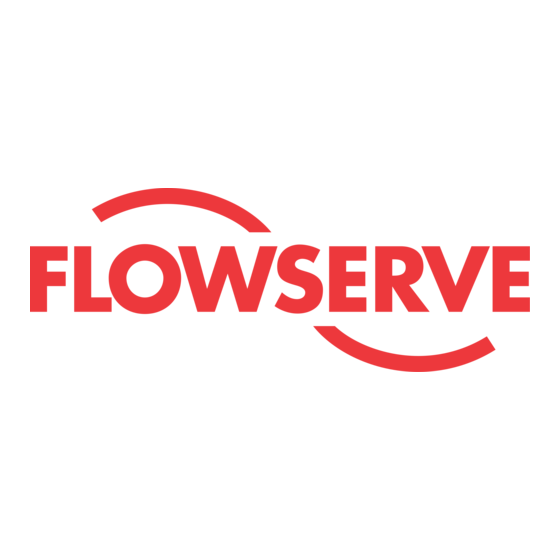Advertisement
Quick Links
Advertisement

Summary of Contents for Flowserve GTS Series
- Page 1 Installation Instructions GTS Series Externally Mounted Steam Seal Experience In Motion...
- Page 2 Introduction The GTS steam turbine seal is especially designed for operation in steam turbine applications. Successful operation relies on proper installation of the seal. These installation guidelines will cover the basic steps required to install the seal as well as additional factors to consider that will affect the installation.
- Page 3 2.5 Shaft damage, especially in the area of the carbon rings. Check the integrity of the overlay. It is possible for steam to leak beneath the overlay if improperly applied. 2.6 Check the turbine alignment. The shaft runout and the perpendicu- larity should meet normal pump standards.
- Page 4 3.5 Steam traps should be installed at regular intervals (every 30 to 50 m or 100 to 150 ft) in the steam main with correctly sized condensate pockets. 3.6 Steam traps should be installed upstream of isolation valves that are regularly closed. 3.7 Insulation of sufficient thickness should be installed on the piping to prevent excess radiation losses that result in condensate formation.
- Page 5 In continuous operation or slow roll, hot inlet steam will enter the turbine and flow out through the exhaust. This will usually keep the exhaust line much warmer than in hot standby, reducing the flow of condensate into the turbine. Of course, the steam trap must be sized for the worst case condition.
- Page 6 Inspection of Steam Turbine Components 4.1 Remove the rotor element from the steam turbine. 4.2 Remove coupling, thrust bearing, speed pickup, slinger, etc. from the rotor assembly. 4.3 Inspect the seal assembly drawing and confirm the turbine dimen- sions shown. See Figure 1. Seal Chamber Requirements Figure 1 Length of...
- Page 7 4.4 Inspect the areas of all sealing surfaces. This includes the areas near the flange gaskets 18 and sleeve gaskets 19 . See Figure 2. These areas must be free from any large pits, corrosion, or steam erosion. Any damage in these areas must be repaired to insure proper sealing of the static gaskets.
- Page 8 5.6 Orient the seal so the drive collar end is facing away from the rotor. Carefully slide the seals onto the appropriate shaft diameter without the sleeve gaskets 19 and drive collars 58 . If the split rings pop out, reinstall them. Note: The gland bolts will be installed after the turbine is assem- bled.
- Page 9 5.15 Install the socket headed cap screws 40-2 to secure the seals to the turbine. Use the same torque as that specified by the turbine manufacturer for the carbon box. 5.16 Loosen the screws 40-1 securing the setting plates 103 by 1/2 turn.
- Page 10 This product is a precision sealing device. The design and dimension tolerances are critical to seal performance. Only parts supplied by Flowserve should be used to repair a seal. To order replacement parts, refer to the part code and B/M number. A spare backup seal should be stocked to reduce repair time.
- Page 11 Seal Nomenclature Figure 2 40-2 40-1 Description Description Drive Pin Gland Gasket Seat Gasket Sleeve Gasket Stationary Face Hex Head Cap Screw Rotating Face 40-1 Hex Head Cap Screw Rotating Face Gasket 40-2 Socket Head Cap Screw Bellows Assy Cup Point Set Screw Bellows Adapter Gasket Drive collar Shaft Sleeve...
- Page 12 Telephone: 31 765 028 200 selected, this Flowserve product is designed to perform its intended function safely during its useful life. However, the purchaser or user of Flowserve products should be aware that Flowserve products might be used in numerous applications Telefax: 31 765 028 487 under a wide variety of industrial service conditions.







Need help?
Do you have a question about the GTS Series and is the answer not in the manual?
Questions and answers